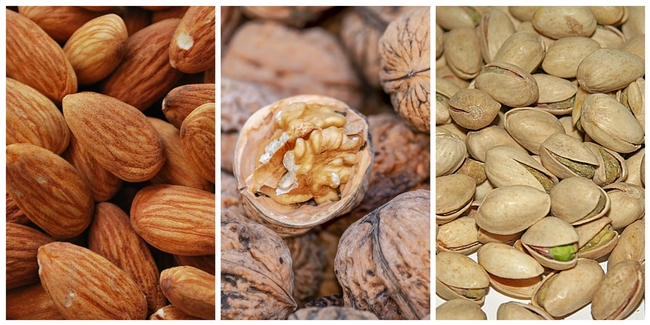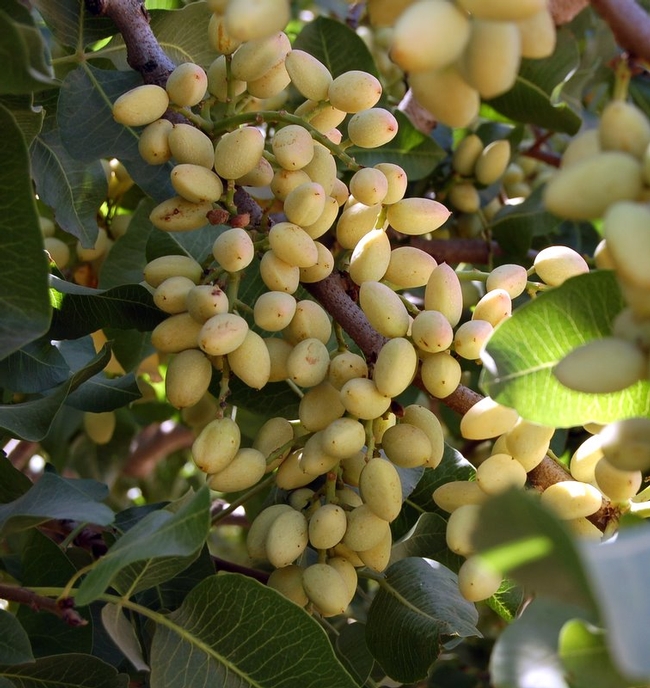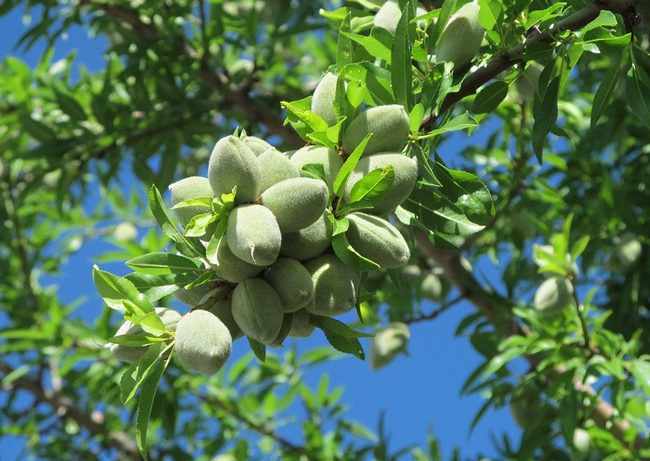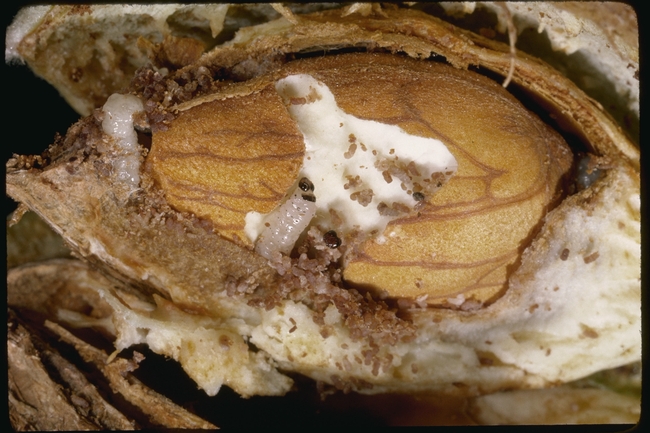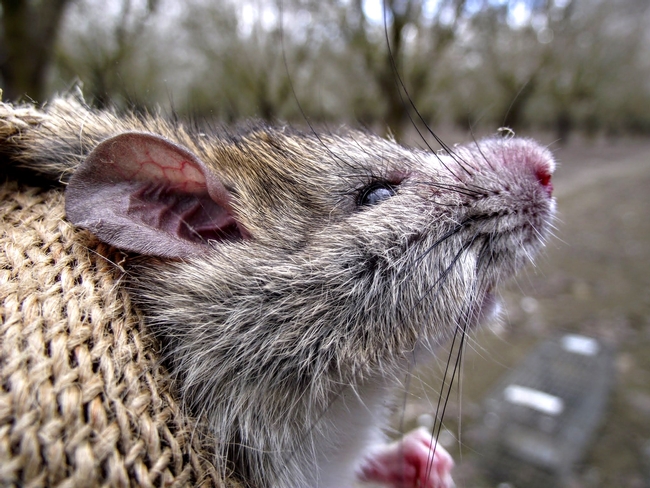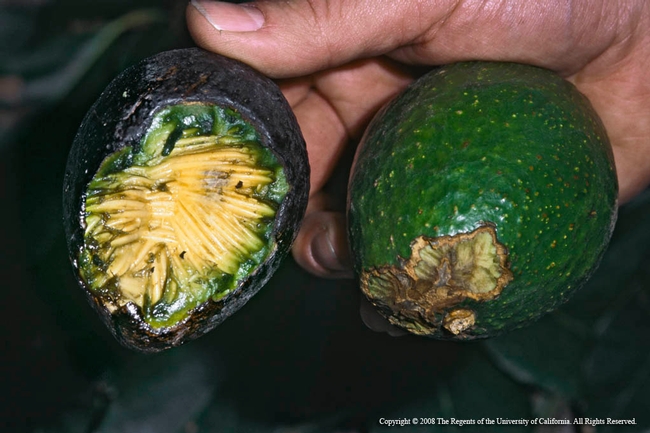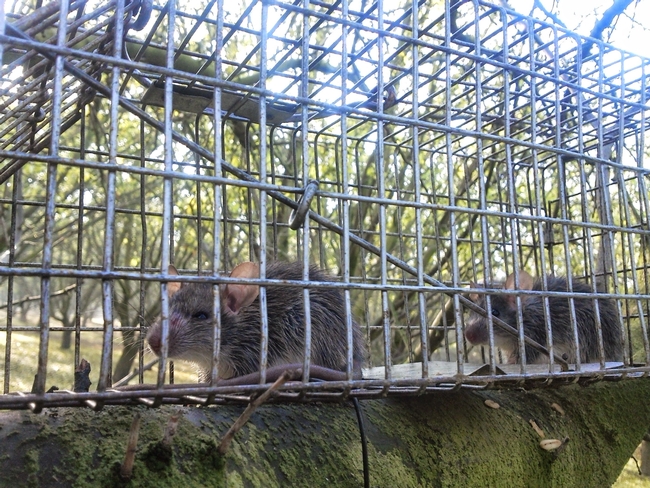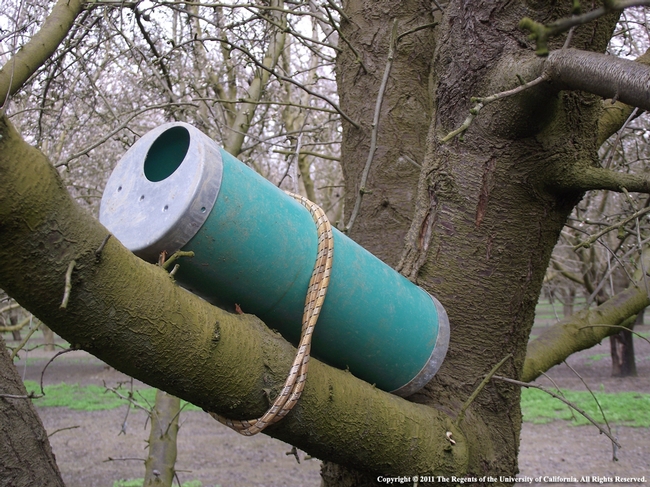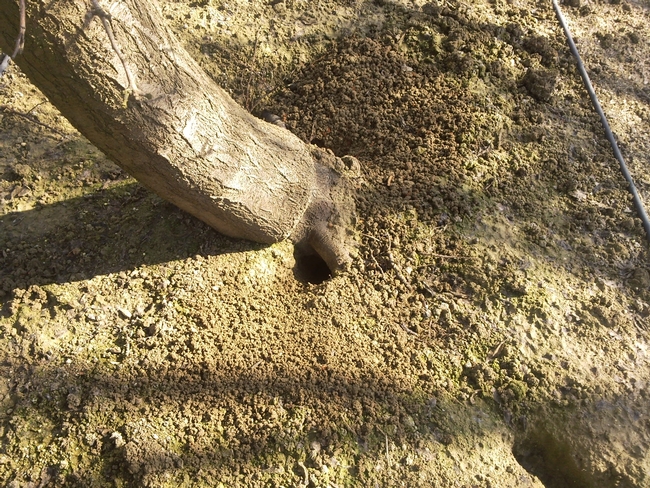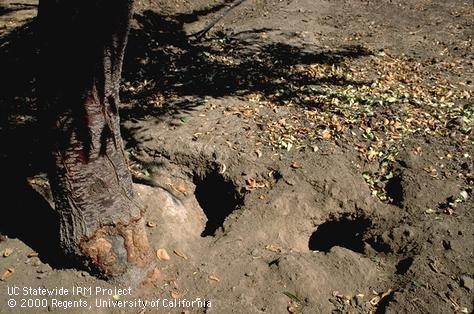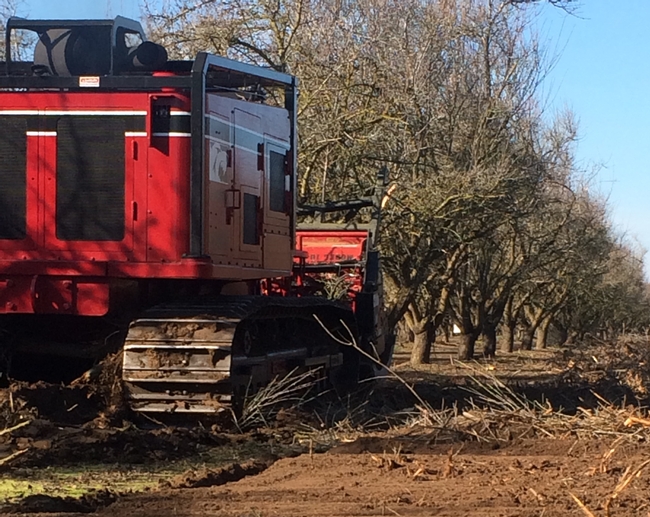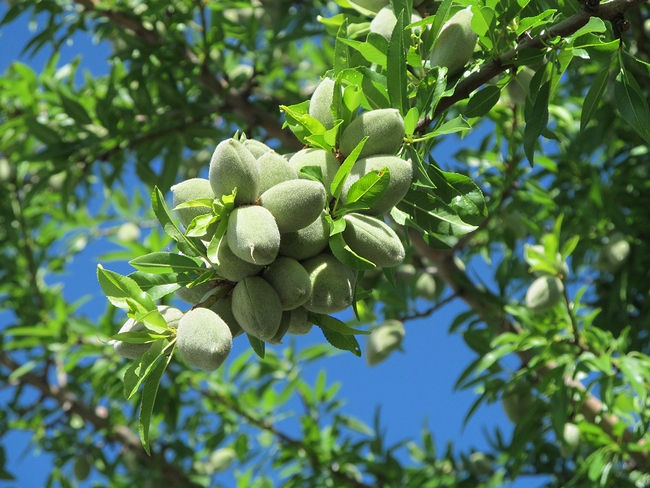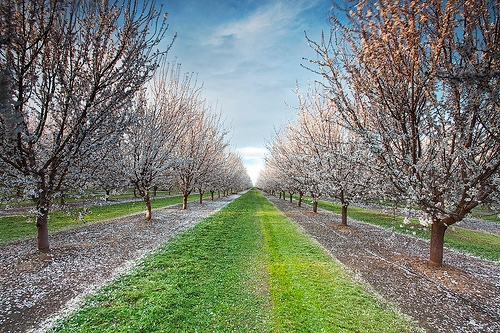Posts Tagged: Almonds
California nut industry provides funds to hire four UC Cooperative Extension research associates
Four staff research associates will join the ranks of UC Cooperative Extension scientists in the coming months to support nut crop advisors conducting critical research in walnut, almond and pistachio production.
The California Walnut Board, the Almond Board of California and the California Pistachio Research Board together have provided about $425,000 to cover annual salaries, benefits, travel and equipment for the new UC Cooperative Extension staff. Under the terms of the agreement, the new positions will be funded annually for up to three years, pending available funds and success of the program.
“By supporting these new positions in UC Cooperative Extension, the California Walnut Board, the Almond Board of California and the California Pistachio Research Board show their recognition for the value of applied research conducted by our nut crop advisors,” said UC Agriculture and Natural Resources vice president Glenda Humiston. “We are grateful to these industry organizations for this vote of confidence and the generous funding to generate science-based knowledge to apply on California farms.”
The new research associates will each devote time supporting two advisors with tree nut assignments:
- Allan Fulton and Luke Milliron, serving Butte, Glenn and Tehama counties
- Katherine Jarvis-Shean and Franz Niederholzer, serving Colusa, Sacramento, Solano, Sutter, Yolo counties
- Mae Culumber and Phoebe Gordon, serving Fresno, Madera and Merced counties
- Elizabeth Fichtner and an advisor under recruitment, serving Tulare and Kings counties
The arrangement reflects a change in how UC Cooperative Extension supports the agriculture industries in California with applied research. With less funding from its traditional revenue sources – USDA, the state government and counties – advisors cover more territory than in the past. Over the years, they have also taken on an increasing share of UC's applied research mission serving the state's specialty crops industries.
The new staff research associate positions were crafted to attract highly qualified candidates who will support advisors' applied research efforts. Their primary focus will be on assisting advisors with planning, execution and gathering data on experimental and demonstration field trials.
UCCE advisor emeritus Joe Grant, who now serves as production research director of the California Walnut Board, chaired an industry working group that drafted the plan based on advisors' input about their needs.
“Advisors are competent and creative people with the skills and knowledge to do research. They need the same support that researchers on campus have,” Grant said.
The California Pistachio Research Board previously provided funding for a plant pathology researcher and an integrated pest management advisor at the UC Kearney Agricultural Research and Extension Center in Parlier. In addition, the board supported creation of $1 million endowments for a nut genetics researcher and a tree nut soil science and plant-water relations researcher as part of an initiative co-funded by UC President Janet Napolitano.
“We've been concerned for a long time about UC Cooperative Extension's research capacity and infrastructure issues,” said Bob Klein, manager of the California Pistachio Research Board. “This new initiative will increase efficiency and productivity for farm advisors and also reduce their stress from being overcommitted.”
Josette Lewis, the Almond Board chief scientific officer, said the organization depends on UCCE farm advisors for unbiased, quality information about almond production.
“Advisors are a valuable link between UC campuses and growers, not only in doing applied research that helps growers thrive, but in meeting California's goals of environmental and social sustainability,” Lewis said. “The information they generate is shared with a host of ag industry professionals – pest control advisers, crop consultants and people in the private sector who provide services to growers.”
Commodity industry funding for UC Cooperative Extension reflects the value the nut crop industries leverage from one of the strongest agricultural research and extension systems in the world, Lewis said.
The new program is modeled after a pilot project in Colusa County in which the Almond Board provided funding for Niederholzer to hire an intern to support almond research. A young scientist who held the post from 2015-16 was Milliron. In 2017, UC Cooperative Extension named Milliron a sustainable orchard systems advisor for Butte, Glenn and Tehama counties and he will now supervise one of the new staff research associates.
“We had a chance to keep him in the system and capitalize on what he learned during his internship,” Lewis said.
There are other tree nut and fruit advisors in need of research help, Grant said. For example, there are concentrations of tree fruit and nut acreage and growers in Kern, San Joaquin and Stanislaus counties.
“We positioned these four research associates where we heard the need for help was most critical. We can see adding another position or two in the future if funds are available,” Grant said.
UC ANR updates cost estimates for growing almonds
UC Agricultural Issues Center has released new studies estimating the cost and returns of establishing an almond orchard and producing almonds for three growing regions of California.
“These cost studies are valuable for agricultural producers all along the continuum – growers considering entering into a new crop production business, less experienced growers, and those with decades of experience,” said Emily Symmes, UC Cooperative Extension integrated pest management advisor for the Sacramento Valley. “The information in these cost studies allows growers to evaluate their production practices and associated costs relative to an exemplary hypothetical orchard specific to their geographic region, and can help with development of business models, crop insurance and lending.”
In 2018, almonds ranked third among California commodities with almond growers receiving nearly $5.5 billion in cash receipts.
The cost analyses are based on hypothetical farming operations of well-managed almond orchards, using cultural practices common to the region. Local growers, UC Cooperative Extension farm advisors and supporting agricultural representatives provided input and reviewed the methods and findings of the studies.
“The recent almond updates for the Sacramento and San Joaquin valleys reflect costs associated with the continually evolving conditions facing agriculture,” said Symmes, who co-authored the almond cost studies. “Some of the notable updates include labor, irrigation and pest management costs – all integral to producing and delivering a high-quality crop.”
The researchers based one study in the Sacramento Valley, one in the northern San Joaquin Valley and the other in the southern San Joaquin Valley.
The southern SJV study is based on an orchard that uses double-line drip irrigation, whereas the other two locations use microsprinkler irrigation. All are multi-year studies, estimating costs from removal of the previous orchard, through almond orchard re-establishment and the production years. The economic life of the orchards used in these analyses is 23 to 25 years.
Navel orangeworm (NOW) is a major pest in almond production; Symmes and her co-authors describe in detail the pesticide applications and winter sanitation methods for each location for NOW control and include the costs.
The authors describe the assumptions used to identify current costs for orchard establishment, almond production, material inputs, cash and non-cash overhead. A ranging analysis table shows net returns over a range of prices and yields.
The new studies are titled:
- Sample Costs to Establish an Orchard and Produce Almonds in the Sacramento Valley - 2019
- Sample Costs to Establish an Orchard and Produce Almonds in the Northern San Joaquin Valley - 2019
- Sample Costs to Establish an Orchard and Produce Almonds in the Southern San Joaquin Valley - 2019
The studies are available for free download at the UC Davis Department of Agricultural and Resource Economics website at http://coststudies.ucdavis.edu. Sample cost of production studies for many other commodities are also available on the website.
For additional information or an explanation of the calculations used in the studies, contact Donald Stewart at the UC Agricultural Issues Center at (530) 752-4651 or destewart@ucdavis.edu. To contact a local UC Cooperative Extension advisor, find the UCCE office in your county at http://ucanr.edu/County_Offices. The Agricultural Issues Center is a statewide program of UC Agriculture and Natural Resources.
Roof rats unnerve farm workers, damage orchard crops
Monitor for rodent activity and use bait stations before the growing season to prevent problems, UC ANR scientists recommend.
Roof rats are running rampant in California orchards this year, according to UC Agriculture and Natural Resources scientists.
“In pistachio and other nut orchards, roof rats are burrowing and nesting in the ground where they're chewing on irrigation lines, causing extensive damage,” said Rachael Long, UC Cooperative Extension advisor. “They are also nesting in citrus trees, feeding on the fruit and terrifying field workers when they jump out as people are picking fruit. The chewing pests are also girdling citrus limbs, causing branch dieback.”
The wet winter of 2017 led to lots of weed seeds for rats to eat. “Last season, rats were also nibbling on pomegranates, avocados, and other fruit and nut crops, rendering them unmarketable,” Long said.
Holes in the ground around the base of pistachio trees throughout a Yolo County orchard puzzled the grower.
“We looked for ground squirrels, but never saw any,” Long said. “We set up game cameras, but only got birds and rabbits. We put rodent bait in the holes, but the digging didn't stop.”
Long, the pest detective, cracked the case by consulting Niamh Quinn, UC Cooperative Extension human-wildlife interactions advisor based in Irvine. “She informed us that the damage we were seeing was from roof rats.”
Burrowing roof rats sounds like an oxymoron. While roof rats generally don't burrow in urban environments, their country cousins have been known to burrow.
“It's not true that they don't burrow,” Quinn said. “When I worked as staff research associate for Roger Baldwin, UC Cooperative Extension wildlife specialist, that is mostly what we studied, burrowing roof rats in orchards.”
Control measures
Baldwin said, “It seems to be a good year for rats in a number of different areas and crops throughout the state. I've received more questions and comments about rats this year than perhaps the last 10 years combined. As for bait application, putting bait down burrow systems for rats doesn't usually work too well, so I'm not surprised that approach didn't work. Growers will likely have better luck with bait stations in the trees.”
Because the rats climb, Baldwin suggests attaching bait stations to tree branches.
“In addition, elevating the bait stations will eliminate access to bait for many protected mammal species, such as kangaroo rats,” Long said. “The bait diphacinone grain can be purchased from some ag commissioners' offices. This is what Roger Baldwin said they tested and it worked.”
As for the bait stations, they should be designed so that there isn't any spillage for nontarget animals to eat, Long said.
When roof rat outbreaks occur, rodenticides are often needed to prevent crop damage. However, timing is critical as diphacinone use is highly restrictive and not allowed during the growing season, which is beginning as the weather warms.
“Check the product label for application instructions,” Long reminds growers. “It's the law.”
Identifying the pest
One way for growers to identify whether they have roof rats is by the size of the burrows. The nocturnal pests are active above ground in trees and below ground.
“Roof rats can forage away from their nest, so you won't likely find signs of their activity, such as rat droppings outside their burrow, to help identify them,” Long said.
Ground squirrels are active during the day, so they are more likely to be seen, dig holes about 4 inches in diameter and forage above ground near their burrows. Vole and mouse holes are 1- to 2-inches in diameter. Roof rat holes are typically 3 to 4 inches in diameter and might have nut shells in front of them, for example pistachio or almond shells. Rabbits will feed on seedling crops, but do not dig burrows.
Roof rats are prolific breeders that reproduce year-round, according to Baldwin. Females typically have three to five litters per year with five to eight young, enabling their populations to rapidly increase. The omnivores feed on a wide variety of plant and animal materials, allowing them to adapt to any environment, including urban and agricultural lands.
“Rats are sneaky and hard to spot,” Long said. “If you see damage, including digging in the soil but no wildlife, suspect rats.”
For more information on controlling roof rats, download Quinn and Baldwin's free UC ANR publication 8513, Managing Roof Rats and Deer Mice in Nut and Fruit Orchards at http://anrcatalog.ucanr.edu/Details.aspx?itemNo=8513.
For more information about ground squirrels, download the free UC IPM Best Management Guidelines http://www.groundsquirrelbmp.com or UC IPM Pest Note http://ipm.ucanr.edu/PMG/PESTNOTES/pn7438.html.
UCCE is taking the melodrama out of almond orchard recycling
Almond farmers will remember a UCCE demonstration last February when the 50,000-pound Iron Wolf rolled like a tank through an almond orchard in Chowchilla, ripping whole trees into shreds and incorporating the wood into the soil.
Researchers are now considering a less dramatic approach to removing an old orchard and incorporating the wood chips into the soil onsite. Combining a traditional horizontal chipper with a wood chip spreader modified for this purpose can be a viable alternative to the now-mostly banned burning of old orchards or transport of almond tree residue to co-generation facilities that convert biomass to energy.
“It's still cheaper for the farmer if he or she can sell the wood chips for co-generation,” said Brent Holtz, UC Cooperative Extension advisor in San Joaquin County and the research leader. “But co-generation plants are closing and our research is showing that incorporating the biomass into the soil has many benefits.”
When the wood breaks down, it returns nutrients to the soil. Organic matter increases, resulting in carbon sequestration, important for moderating the release of greenhouse gases into the atmosphere that may contribute to climate change.
The chipper and spreader combination pencils out at about $1,000 per acre, while the Iron Wolf costs about $1,500 per acre.
“The Iron Wolf turned out much more expensive and slower than we anticipated,” Holtz said. “It could only grind up and incorporate about two acres of trees per day, while the horizontal chipper can chip 15 acres per day. With the chipper and spreader combination, the chips do have to be disked in, which most growers can easily do.”
The whole orchard recycling project was funded by the Accelerated Innovation Management program of the Almond Board of California.
Whole Orchard Recycling Demonstration
11630 S. Airport Way (near Roth Road), Manteca, Calif.
Thursday, Oct. 13, 2016
10 a.m.
Whole almond orchard recycling and the effect on second generation tree growth, organic matter and soil fertility presentation
Brent Holtz, Ph.D., UC Cooperative Extension advisor
10:30 a.m.
Kuhn & Knight Wood Chip Spreading Demonstration
Randy Fondse, G & F Ag Services, Ripon, Calif.
11 a.m.
Morbark Horizontal Chipper Demonstration
Randy Fondse, G & F Ag Services, Ripon, Calif.
UC releases new cost studies for growing almonds
The cost analyses are based on hypothetical farm operations of well-managed orchards, using practices common to each region. Growers, UC ANR Cooperative Extension farm advisors and other agricultural associates provided input and reviewed the methods and findings of the studies. Two studies estimate the costs for establishing and producing almonds grown in the northern San Joaquin Valley and Sacramento Valley using micro-sprinkler irrigation. These are multi-year studies, estimating costs from previous crop (orchard removal) through orchard establishment and the production years.
The study for organic almonds takes into consideration growing conditions in the northern San Joaquin Valley and complying with the National Organic Program. This study is based on an orchard that began the transition period and certification as organic after the second year of establishment. The trees in this study are in production and at full bearing. This organic almond orchard uses a solid-set sprinkler system.
The economic life of the orchards used in this cost analysis is 25 years. The authors describe the assumptions used to identify current costs for the almond crop, material inputs, cash and non-cash overhead. A ranging analysis table shows profits over a range of prices and yields. Other tables show the monthly cash costs, the costs and returns per acre, hourly equipment costs, and the whole farm annual equipment, investment and business overhead costs.
The new studies are titled as follows:
- Sample Costs to Establish an Orchard and Produce Almonds in the San Joaquin Valley – North- 2016
- Sample Costs to Establish an Orchard and Produce Almonds in the Sacramento Valley – 2016
- Sample Costs to Produce Organic Almonds in the San Joaquin Valley - North - 2016
Free copies of these studies and other sample cost of production studies for many commodities are available. To download the cost studies, visit the UC Davis Department of Agricultural and Resource Economics website at http://coststudies.ucdavis.edu.
The cost and returns program is funded by the UC Agricultural Issues Center, which is part of UC Division of Agriculture and Natural Resources, and the UC Davis Department of Agricultural and Resource Economics.
For additional information or an explanation of the calculations used in the studies, contact Don Stewart at the Agricultural Issues Center at (530) 752-4651 or destewart@ucdavis.edu, or Christine Gutierrez at (530) 752-1520 or cagut@ucdavis.edu.

